The buildings were certainly old, even antiquated by current standards. They were a poor representation of a university that was pushing to gain national recognition as a leader in the field of research and education.
So thought Brown Ayres, the 12th president of the University of Tennessee, as he looked up at the Hill back at the dawn of the 20th century. Ayres presided over the university from 1904 until his death in 1919, and it was during his presidency that many significant changes, made by former president Charles Dabney, in the university’s character began to take physical shape.
Under Dabney, Ayres’ immediate predecessor, the University of Tennessee had grown from a small college focused on agricultural, scientific, and military education to a multidisciplinary academy and research institution that had gained recognition throughout the South, even throughout the country.
Dabney led the university from 1887 to 1904, during which time he doubled the size of the university’s faculty and nearly tripled the size of its student body—aided, no doubt, by the regular admission of women starting in 1893. He emphasized and expanded the school’s already-strong programs in agriculture, science, and engineering and added an education department, which launched a revolutionary teacher-training program aimed at improving free public education for poor Southerners, both white and black. This program—the Summer School of the South—became the largest teacher-training institution in the South, enrolling 2,100 students from 31 states in its first year alone.
Dabney’s tenure also saw the first direct appropriations from the state of Tennessee to the university.
To support these changes, Dabney made extensive additions and renovations to the campus that increased its property value nearly nine-fold. After his departure, the extensively educated Memphis native Dr. Brown Ayres became president, and he continued to initiate major changes, both to the university’s physical plant and its academic composition. The departments of law, medicine, and dentistry were elevated to colleges—although medicine and dentistry were moved to Memphis—and the academic stature of the College of Liberal Arts was elevated. The agriculture program was expanded, and the teacher-training program was incorporated into the university. A school of commerce, now the College of Business Administration, was created, and a freestanding university library was built.
In short, the university had gone from a small classical school focused chiefly on a few disciplines to a sizable university that attracted students from all over the country for its widely varied offerings.
A “stately hall” rises . . .
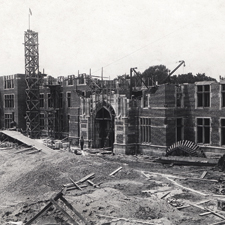
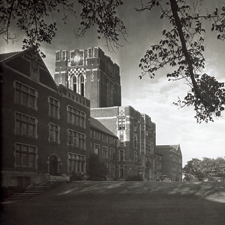
The dramatic shifts in priorities and operations of the university led Ayres to think about building a large, stately structure on College Hill, which had long been the geographic focal point of the university. Such a prominent building at the center of the campus would symbolize the university’s strengths. Ayres wanted this modern structure to replace three outdated buildings on the Hill—West College, Old College, and East College, which were subsequently razed. The style chosen for the new building was the collegiate Gothic style that was then in fashion at several prominent Northeastern universities, including Yale and Princeton.
Unfortunately, Ayres died before construction began. His dream was realized, however, when Ayres Hall was completed in 1921, and a new icon representing the expanded and enriched university was born.
Nearly 100 years later, Ayres Hall remains an immediately recognizable reference to the academic identity of the University of Tennessee: at one point or another, the edifice has housed nearly every non-science department of the university. Unlike Brown Ayres, however, today’s university administration did not envision a demolition of the existing building for an all-new structure. Rather, planners aimed to preserve the best elements of Ayres Hall while replacing those that were out of date.
The clearest outward indication of this mindset is the exterior of Ayres Hall, which is largely unchanged. Other than the addition of hands to the tower clock, there are no major changes to the outside of the building. The inside proved trickier, however. The old windows, walls, stairways, and transoms may have imparted a Jazz Age ambience, but they also did not allow for a great deal of modernization over the years.
“When I arrived to teach my first class there [in 2007], I toted along my laptop and projector, expecting to show some slides to my American history class. Then I discovered that there were no outlets, except one in the far back of the room and about ten feet up on the wall. I couldn’t reach it, and I didn’t trust it, since it did not look like it had been used for many years. We used the chalkboard instead of PowerPoint that semester, but I did enjoy the high windows and creaky floors,” history professor Ernest Freeberg says.
“ . . . glorious to the sight”
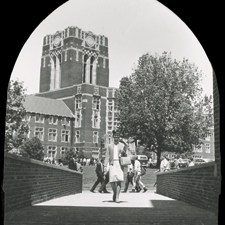
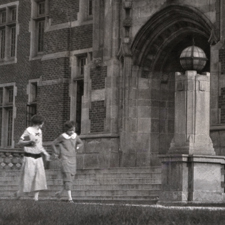
To address these and other issues, the hall’s interior underwent what Lori Wilson, project manager for UT Facilities Planning, calls a “selective demolition.”
Because much of the hall’s infrastructure, including its electrical system, was out of date, the interior of the hall went through a total renovation, part of which reflects the university’s ongoing efforts to be environmentally friendly. A new mechanical system was installed that provides energy-efficient lighting and electricity, as well as air conditioning. The building’s new windows also help save energy. Because of these and other eco-friendly elements, the new Ayres Hall is Leadership in Energy and Environmental Design (LEED) certified.
Other renovations addressed accessibility. Three new elevators were installed, making the building friendlier to students and members of the staff and faculty with disabilities. And the fourth floor, which had been closed since the 1970s by order of the fire marshal, was renovated to meet building code standards and reopened.
These changes, however, did not necessitate completely demolishing the hall’s interior.
“We saved the interior doors, some wood flooring, and the light fixtures. Things of historical value were saved and will be restored,” Wilson says. Other original elements of the building that will be reinstalled include the center staircase, some handrails, and some of the transoms. After its renovation, Ayres will contain the Math Department and administrative offices. Classes will resume in spring 2011.
“The renovated Ayres Hall will maintain its original grand architectural design and character while incorporating the most modern energy-efficient climate controls and the most sophisticated classroom instructional technology. We particularly look forward to showing our guests and visitors the fourth-floor colloquium suite, which will be one of the signature spaces on campus,” professor Mike Frazier, head of the mathematics department, says.
The University of Tennessee of today cannot be compared to its incarnation a century ago, but Ayres Hall can show us the similarities and differences between the university’s priorities then and now. The term eco-friendly had not yet entered the public’s consciousness, and elevators and air conditioning certainly were not an issue. But creating an iconic building that answered contemporary needs and reflected the nature of the university was at the forefront of everyone’s mind, in both this century and last.
Ayres Hall now shows that you can look to the future without breaking your ties to the past.
—Meredith McGroarty
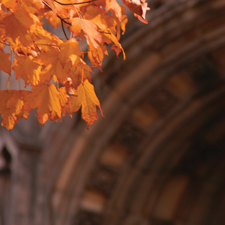
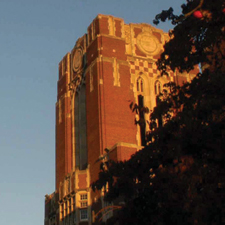
Ayres Hall Timeline
September 10, 1794
The university’s history begins with a charter as Blount College. Tuition is set at $8.00 a semester. Samuel Carrick, the first preacher in Knoxville, becomes president.
1807
After conferring one degree in 13 years, the college receives a state grant and becomes East Tennessee College.
1826
The Board of Trustees votes to purchase a 40-acre tract called “Barbara Hill” for the college. The tract, situated west of Knoxville, is described as “near and yet secluded.”
1828
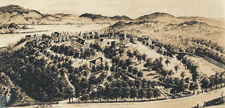
The college’s first building, Old College, is erected on “the Hill.” The site is currently occupied by Ayres Hall.
1836
The first UT Alumni Association is established.

1869
The university receives a federal land grant provided by the Morrill Act of?1862. As a provision of the act, the university admits its first African American students, who actually attended Fisk in Nashville.
1869
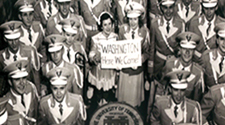
“The Pride of the Southland Marching Band” is formed as part of the university’s Military Department.
April 12, 1889
Inspired by the wildflowers on nearby hills, Charles Moore, president of the athletics department,
selects orange and white as school colors on the first University Field Day.

1892
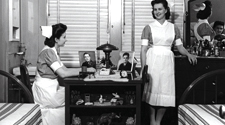
The first women are admitted to University of Tennessee.
1902
A UT athletic team is dubbed the “Volunteers” by an Atlanta Constitution reporter. By 1905, the name had become official.
September 13, 1911
Under the direction of President Brown Ayres, UT’s first free-standing library opened its doors.
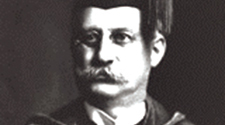
November 11, 1916
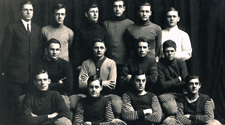
UT holds its first Homecoming in conjunction with a UT–Vanderbilt football game.
1921
Ayres Hall Completed
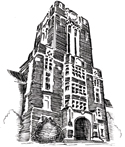 The first football game is played on Shields-Watkins Field, the earliest element of what has become Neyland Stadium.
The first football game is played on Shields-Watkins Field, the earliest element of what has become Neyland Stadium.
1928
A Chattanooga woman, Mary Fleming Meek, pens “On a Hallowed Hill” for a contest sponsored by the UT Department of Music. Her song is selected as the UT alma mater.
1938
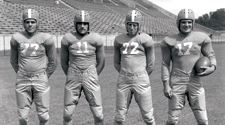
The UT Vols win their first national football championship.
1953
 The student pep club adopts “Smokey,” a hound dog, as the school’s live mascot.
The student pep club adopts “Smokey,” a hound dog, as the school’s live mascot.
1967
“Rocky Top” is written by songwriters Felice and Boudleaux Bryant.
2000

Renovations to Neyland Stadium make it the largest football stadium in the South and the third largest college stadium in the country.
2005
The “Ready for the World” initiative is launched to transform the campus into a culture of diversity.



20 comments
oh, to think that this mattered half as much to tennesseans as the renovations to neyland stadium. it doesn’t, and won’t until a sizable minority of influential supporters realize that degrees are more important than touchdowns. having earned two degrees from u.t., the last in 73. tennessee’s academic standing is far more important to me than its standing in the s.e.c. tennessee’s real competition should be with the vandys, dukes, and emorys, not the bamas, ole miss’s, and l.s.u.’s. until that happens, tennessee will never be considered a serious university. the orange clad dimwits who clog cumberland avenue on fall saturdays wouldn’t stand for a football team which ranked at the same levels as the university does perpetually. why can’t they see what is really important?
Great story. As a professional editor and writer myself, I compliment you on a piece that conveys respect and affection without descending into sentimentality.
I attended UT (or UTK, as I remember referring to it, being from Texas with its own UT) 1972-76 (PhD, English) and I took a couple of classes in Ayres. I even think the fourth floor may have still been open. Memories of it standing on The Hill are very dear as the symbol of my time there, although I’m afraid McClung Tower also comes to mind when I remember my experience.
Best of luck.
The initial sight of Ayres Hall in September 1963 on a sunlit late summer morning was my first and remains my most lasting memory of my days at The University of Tennessee. Ayres Hall was then the center of the academic campus. I often had classes from morning to late afternoon in Ayres, and the first time I asked a girl for a date at UT was at the bottom of the steps on the first floor. After I met my future wife during my junior year we met after classes outside of Ayres and then before lunch. Students unlucky to have had Saturday classes can recall hearing the band and probably, like me, not hearing a word the professor was saying, itching to get back to change and pick up a date for the game.
I remember charging up the steps on a hot spring afternoon to avoid being late for a class after sitting out in the sun during prime tanning hours. And I can never forget sitting on the hill facing Cumberland Avenue with my then college sweetheart planning an uncertain future. Finally, after my graduation ceremony, I remember sitting on The Hill thinking the same thought of many a graduating senior: What do I do now? How can I leave this place I have come to love?
My wife and I come back as often as we can now, always in the fall when the campus is abuzz with football fever. But we never fail to climb the Hill and look across at the majesty of Ayres Hall, or sit on the steps, or just sit in the grass. The campus has expanded far from The Hill, but our hearts are never far from Ayres. May it regain its former glory.
I suppose my most vivid memory of Ayres Hall is shuffling up the hill to an eight o’clock class after coffee and a doughnut at E&E (Ellis & Ernest Drugstore for the late comers). I had many classes there when air conditioning was an open window. In the hot weather, I had trouble staying awake for early classes. I lived part of the time in the rambling plywood structure thrown up at the edge of the campus for veterans’ housing. The view from Ayres Hall was much nicer. It was the center of activity, and I’ll always remember those heady days.
Two great quotations from two great professors in Ayers Hall immediately spring to mind. The first is easily understandable. The second… well, you just had to be there!
1. Dr. Roman Svirsky to a differential equations class full of engineering students, plus one stray zoology student: “If you can’t solve this simple Bernoulli equation, then why the hell would I want to drive across any bridge you design? This is a matter of self preservation!”
2. Dr. Tom Hallam, at the beginning of integral calculus: “What is the color of John’s white horse?”
When I think of UT, the first thing that pops into my head is Ayres Hall. As a freshmen in 1984 I had classes there and will remember the feeling I had when entering the building. It made me feel as if I was part of a legacy that still continues today. I am so glad it will be updated for generations to come!
In my time at UT (late 1950’s/early 1960’s, where I earned the M.A. and Ph.D. in Political Science) Ayres Hall was the hub of the liberal arts (except for the sciences). I was fortunate to be the student of gifted and memorable faculty members such as Lee Greene, Wallace Mendelson, and William Goodman. And Kate Leake, senior secretary in the Political Science Department, looked after the needs of students about whom she cared so much. The inspiration and guidance of these faculty and staff, and others, accounted for the direction my career and life have taken. In my first visit to campus I had the chance to meet Andy Holt, who offered me the use of his car so I could look for housing. Many important professional and personal friendships, such as with Joe and Pat Johnson, fellow students at the time, developed during my years there. So much of all that happened took place in Ayres Hall. Thank you for rebuilding it as the focal point of the university experience for so many students–past, present, and future.
As a freshman in the fall of 1970, I climbed those many steps to Ayres Hall each Saturday morning to take a math class with a teacher whose command of English was sketchy. I loved the “old” smell of the building, I spent quite a bit of time staring out the windows at the beautiful fall colors, listening to the band and the sound of football excitement; somehow I also learned a great deal of math. It was an introduction to to my college career that has not faded in my memory at all. So, the interior staircase has been preserved. Great! I can still see myself climbing it. My wish is that future students will appreciate the past while looking to the future.
I was a graduate assistant to Dr. L.W. Cureton and Dr. E.E. Cureton in 1970-71. They were husband and wife, and were both celebrated statisticians. They were professors in the Statistics division of the School of Psychology. I had a small office on the fourth floor of Ayres Hall, in a room that held the department’s calculators. There were Monroe, Marchant, and Burroughs mechanical calculators. I remember when the first electronic calculators (Wang) were set up; what marvels we thought they were! I recall often going up in the bell tower on nice days (it wasn’t heated or cooled) and just relaxing, watching all of the activity on the campus below me.
Ken Haselwander, ’67
Ayers Hall…
Those worn granite steps and trusty banisters somehow assured that I would follow those that climbed before me.
What a symbol !
My parents met in a differential equations class in the basement of Ayres Hall in 1949. My father was part of the post-World War II wave of GI Bill students, and my mother was a rare female math major. She was the only coed in the class. They started dating in the spring and were married in September. It lasted for 52 years until he died in 2001.
My memories of Ayers Hall are of struggling to get there from Andy Holt Apartments in time for a 10:00 class- through rain sleet and snow. The beauty of the building always made the effort worthwhile. But my sister’s story tops mine. As a math major in the early 70’s, she had all her classes there and lived in Dunford Hall. On her way to the hill one day, a kindly gentleman stopped his car and offered her a ride. She looked in through the window and there was Andy Holt himself! Needless to say, she accepted the ride and they had a lovely conversation. She later learned that he frequently offered rides to help students get to Ayres, and he always asked where they were from and how UT was treating them.
I attended UTK from 1969 to 1973 (BS Math/Geology; MS Computer Science) and had many classes in Ayers hall. So many memories. My primary memory is of the wonderful marble staircase to the second floor where the steps were worn thin from thousands of student feet over I don’t know how many years. In the center, the edge of the steps were paper thin and at least 4 inches shallower than at the edges with a deep depression worn in the surface. I usually stuck to the hand rail edges where the steps were more squared off and closer to original size. I was so sad when I had the chance to revisit Ayers in 1993 and immediately hurried to the stairs to look at them again, only to be saddened to see they had been replaced by more modern, safer, utilitarian materials with non-slip steel and rubber edges.
I also remember my math papers stuck to my arms during spring quarter classes as my notes ran from the sweat dripping from my forehead. And there were classes/meetings on the 4th floor and the one time I tried to get into the bell tower but chickened out at the last minute.
I walk by Ayers every chance I get, which is more often now that I’ve retired to Knoxville and I am anxious to get back inside this spring. Now if my poor old Geology building could be restored with the wonderful little paleontology museum just outside the James Walls Memorial lecture hall – again I fondly remember many wonderful Dr. Walls lectures in that room.
As a freshman in 1955, U-T was my dream existance. Until I graduated in ’58, the Hill was the center of my life. History under Dr. Ruth Stevens made the past come alive. “The Kurds who want a state of their own will be a problem in the middle east.” Mr Hatcher, a Graduate Assistant made me struggle over spelling and every comma in short papers, but made “Tess of the d’Urbervilles” an exciting book. Dr. Mendleson in Political Science challenged my ideas on segregation and equality of opportunity.
For two terms I trudged to the top of Ayres Hall at 6AM to do a seven AM morning campus news program at WUOT, the “One Watt Hot Spot” campus radio station, to be followed by a two hour Cindy’s Corner DJing popular music. No one noticed when I played 14 versions of “My Funny Valentine” on Valentine’s Day.
Thank you U-T. Thank you Ayers Hall. Thank God they didn’t tear the old beloved structure down. I hope it lasts another 100 years to give such memories to students.
As a UTK freshman in 1961 I had English and calculus classes in Ayres. The creaky, old oily floors added character to the building. As I got in to my 3rd year, my classes were almost entirely on the engineering side of the hill, except for calculus and differential equations….math profs still in Ayres.
I love Ayres Hall. I have a print of Ayres in our bedroom. (Anne, my wife, is also a UTK grad.) I always look at Ayres when I’m at UT football games or on Cumberland Avenue. The top of Ayres can be seen from my Neyland Stadium seats in QQ. At the end of the season, Ayres is topped with a Christmas tree, while the “Pride of the Southland” play the “12 Days of Christmas,” Rocky Top style.
May Ayres be preserved and improved (to “wireless” and beyond!) as long as there are students on “The Hill.”
I remember very well in Sept. of 1957, walking from Clinch Ave. to Ayres Hall for an 8 am Saturday class. It rained almost every day the first 30 days of my freshman year. As I crossed Cumberland Ave., I waded in water near the curbs that wet me to my ankles. I remember sitting through several of those eaily classes with very wet feet.
Also, we only had 10 minutes to get to Stokely for ROTC class. I had to run all the way and still didn’t make in time. Soon they gave us 15 minutes. We sure could have used those overhead walkways back then.
I had a hard time getting through UT being married, etc., but I have as much affection for Ayres Hall and the University of Tennessee as I ever did. UT has been good to me and my family; brothers and other relatives, Unlike the first commenter on this subject, jim filyaw, I can see the value of having successful athletic teams, and as a season ticket holder for football and basketball, I enjoy the event that occurs prior to each game. My family and friends often meet before, during and after many games I believe you can love and enjoy sporting events while loving, respecting and promoting the University’s academics. A UT alum should promote all aspects of what I believe to a great University.
My memories of Ayers Hall are of struggling to get there from Andy Holt Apartments in time for a 10:00 class- through rain sleet and snow. The beauty of the building always made the effort worthwhile. But my sister’s story tops mine. As a math major in the early 70’s, she had all her classes there and lived in Dunford Hall. On her way to the hill one day, a kindly gentleman stopped his car and offered her a ride. She looked in through the window and there was Andy Holt himself! Needless to say, she accepted the ride and they had a lovely conversation. She later learned that he frequently offered rides to help students get to Ayres, and he always asked where they were from and how UT was treating them.
Curious that you say that the fourth floor of Ayres was closed in the ’70s by the Fire Marshal. I had Computer Science 211 class in the tower room there in 1995, and there were warrens of well-used graduate student offices tucked in below the roof to either side.
Personally, it strikes me that writing about the history of the building while completely making parts of it up calls into question how much importance is actually placed upon it.
As a UTK freshman in 1961 I had English and calculus classes in Ayres. The creaky, old oily floors added character to the building. As I got in to my 3rd year, my classes were almost entirely on the engineering side of the hill, except for calculus and differential equations….math profs still in Ayres.
I love Ayres Hall. I have a print of Ayres in our bedroom. (Anne, my wife, is also a UTK grad.) I always look at Ayres when I’m at UT football games or on Cumberland Avenue. The top of Ayres can be seen from my Neyland Stadium seats in QQ. At the end of the season, Ayres is topped with a Christmas tree, while the “Pride of the Southland” play the “12 Days of Christmas,” Rocky Top style.
Ayers Hall stands as the penacle of the great University of Tennessee. As a Liberal Arts major I had several classes there each year. While it is difficult to say that walking up The Hill to Ayers Hall is a fond memory, I recall fondly and hilariously leaving the south west back door after snow had fallen during my classes and slipping and falling on the ice to the delight of all who saw me. Here’s to you old Tennessee. Ayers is the beacon always shinning bright. I so appreciate the renovation project keeping the facade totally in place.
Comments are closed.